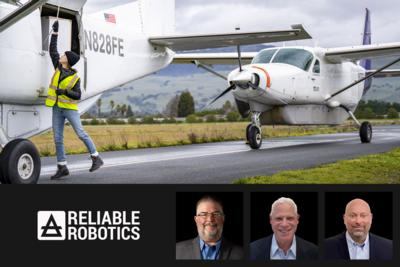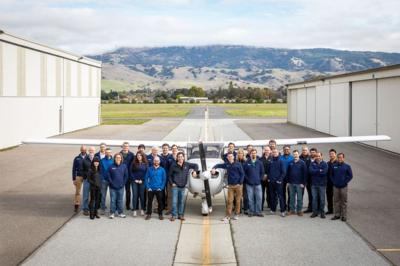Sat, Apr 29, 2023
Collected Data to Validate New Detect & Avoid Tech
Founded in 2017 by CEO Robert Rose and CTO Jureg Frefel for purpose of bringing safe, certified automation systems to commercial aviation, Mountain View, California-based Reliable Robotics announced that it had completed flight testing to substantiate the viability of utilizing extant Federal Aviation Administration (FAA) Primary Surveillance Radar (PSR) data to improve the safety of the U.S. National Airspace System (NAS).

Since 2021, Reliable Robotics has been working with NASA’s Advanced Air Mobility (AAM) National Campaign to advance the safe, secure, and efficient integration of remotely piloted aircraft into the United States’ National Airspace System. The FAA granted NASA limited access to PSR data for use in the flight testing regimen undertaken by Reliable Robotics—the completion of which occasioned a major step toward the widespread utilization of existing radar infrastructure for Detect And Avoid (DAA) systems.
As part of the recently completed flight test campaign, Reliable Robotics coordinated encounters of two of its aircraft in Californian skies while data was collected in real-time by FAA ground-based radars and a separate commercial air-to-air radar installation. The aforementioned flights and the radar data gathered pertaining to such will help NASA analyze and characterize the accuracy of surveillance radars, which the agency will use to develop a comprehensive safety case for DAA systems incorporating extant PSR data.
Brad Snelling, partner chief engineer for NASA’s AAM National Campaign stated: “We appreciate the close collaboration with the FAA and Reliable Robotics to collect meaningful data from flights to improve our collective understanding of using radar for DAA. These landmark flights will help the entire AAM industry further their understanding and future use of PSR data to enhance aviation safety.”

Making high quality PSR data and certified alerting and guidance features available to flying pilots will significantly improve aviators’ situational awareness and go a long way toward preventing mid-air collisions. Automatic Dependent-Surveillance Broadcast (ADS-B) technology will continue to play an important role in the safe integration of Unmanned Aircraft Systems (UAS) in the NAS, but the latter technology is predicated upon universal installation of the requisite aircraft equipment. Secure access to the FAA’s medium and long-range PSR network will enhance the safety of manned and unmanned aircraft operating within the NAS and provide accurate position data on aircraft—even those without ADS-B.
Reliable Robotics co-founder Robert Rose set forth: “We believe PSR data can save lives today. We are honored to partner with NASA on a campaign focused on making the airspace safer for everyone.”
More News
Aero Linx: Commercial Aviation Safety Team (CAST) Founded in 1997, the Commercial Aviation Safety Team (USCAST) has developed an integrated, data-driven strategy to reduce the comm>[...]
Land And Hold Short Operations Operations that include simultaneous takeoffs and landings and/or simultaneous landings when a landing aircraft is able and is instructed by the cont>[...]
We're Everywhere... Thanks To You! Even with the vast resources and incredibly far-reaching scope of the Aero-News Network, every now and then a story that should be reported on sl>[...]
Pilot’s Inadvertent Use Of The Landing Gear Control Handle Instead Of The Flaps Selector Switch During The Landing Rollout Analysis: The pilot reported that during the landin>[...]
Also: Cosmonaut Kicked Out, Airbus Scales Back, AF Silver Star, Russian A-60 Clobbered A Samaritan’s Purse humanitarian flight was hijacked on Tuesday, December 2, while atte>[...]
 ANN's Daily Aero-Linx (12.12.25)
ANN's Daily Aero-Linx (12.12.25) ANN's Daily Aero-Term (12.12.25): Land And Hold Short Operations
ANN's Daily Aero-Term (12.12.25): Land And Hold Short Operations ANN FAQ: How Do I Become A News Spy?
ANN FAQ: How Do I Become A News Spy? NTSB Final Report: Cirrus Design Corp SF50
NTSB Final Report: Cirrus Design Corp SF50 Airborne 12.08.25: Samaritans Purse Hijack, FAA Med Relief, China Rocket Fail
Airborne 12.08.25: Samaritans Purse Hijack, FAA Med Relief, China Rocket Fail




